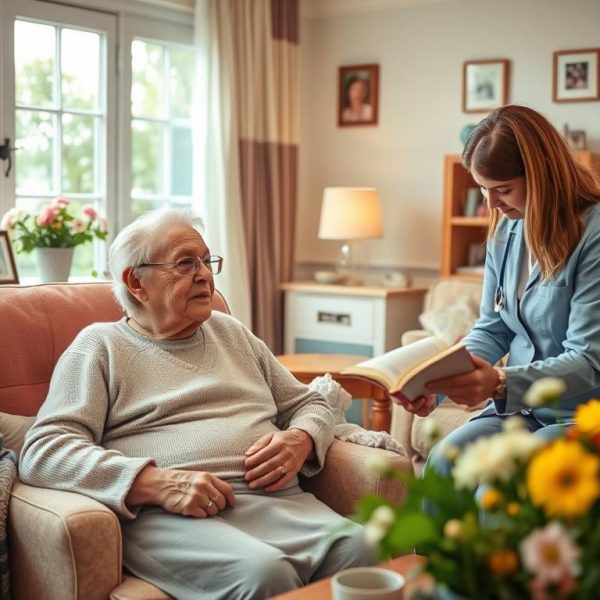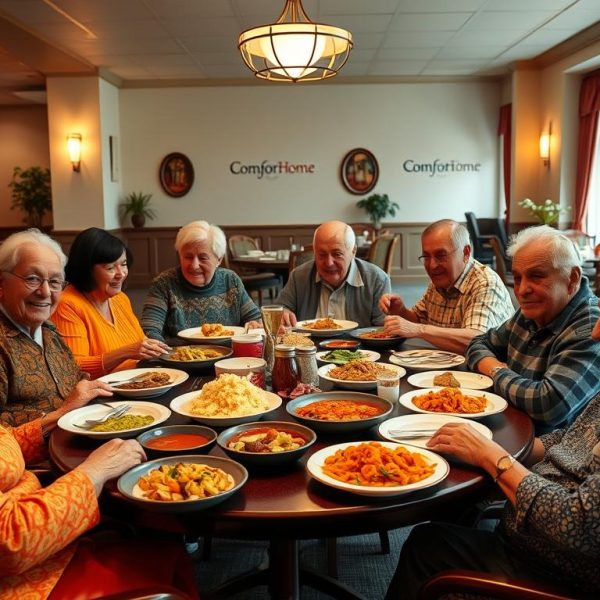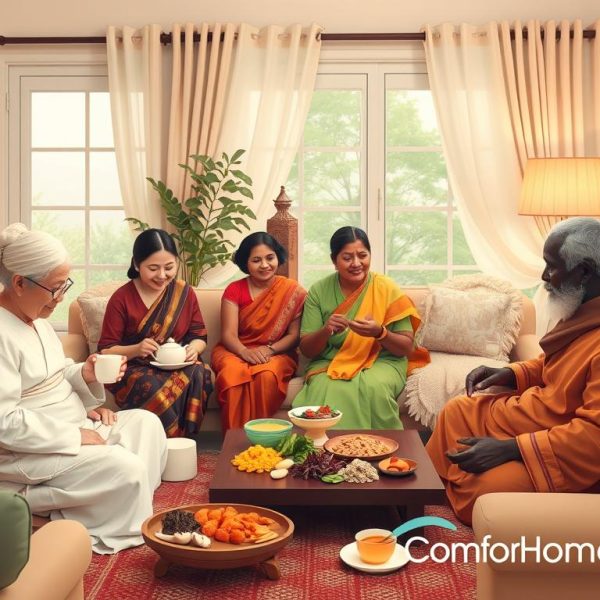Are you curious about the transformative power of art and music in patient care? Imagine a world where healing goes beyond traditional medicine, tapping into the profound realms of creativity and expression. In this eye-opening exploration, we’ll uncover 15 remarkable ways art and music therapy are revolutionizing patient care.
From reducing anxiety to fostering social connections, these innovative therapies offer a unique approach to healing that speaks to the heart and soul. Whether you’re a healthcare professional, patient, or simply intrigued by holistic wellness, this guide will illuminate the incredible potential of art and music therapy.
• Discover how these therapies impact the brain and emotional well-being
• Learn about various types of art and music interventions
• Explore the role of spiritual care in creative therapies
• Uncover practical applications for daily life and self-care
Get ready to embark on a journey that blends science, creativity, and compassion. Let’s dive into the transformative world of art and music therapy and unlock its healing potential.
The Transformative Power of Art and Music Therapy in Patient Care
Have you ever wondered how a simple melody or a stroke of a brush can change lives? Welcome to the transformative realms of art and music therapy.
These powerful healing modalities are revolutionizing patient care, offering hope and healing where traditional methods sometimes fall short.
Imagine a world where the soft strains of a violin ease chronic pain, or where splashes of color on canvas help battle depression.
This isn’t a far-off dream – it’s happening right now in hospitals and care centers around the globe.
Art and music therapy are more than just pleasant diversions. They’re scientifically-backed approaches that tap into our innate creativity to foster healing, both physically and emotionally.
From stroke recovery to mental health management, these therapies are proving invaluable in diverse medical settings.
Ready to explore this fascinating intersection of creativity and healthcare? Let’s dive in and discover how art and music are painting a brighter future for patient care.
💡 Key Takeaways: Art and music therapy are powerful, scientifically-backed healing modalities that are transforming patient care across various medical settings.
Understanding Art and Music Therapy
Ever tried to explain how you’re feeling, but words just didn’t cut it? That’s where art and music therapy step in.
These forms of expressive therapy offer a unique approach to healing, allowing patients to communicate and process emotions in ways that go beyond traditional talk therapy.
But what exactly are art and music therapy?
Art therapy involves using various forms of creative expression – like painting, sculpting, or drawing – as a form of psychotherapy. It’s not about creating masterpieces, but about the creative process itself.
Music therapy, on the other hand, uses the power of melody, rhythm, and sound to address physical, emotional, and social needs of individuals.
Both therapies provide a safe space for patients to explore their inner world, fostering personal growth and emotional healing.
Types of Art Therapy
Art therapy isn’t a one-size-fits-all approach. It comes in various types, each tailored to different needs and goals:
Narrative Art Therapy
This type encourages patients to tell their story through art, helping them process life events and emotions.
Analytic Art Therapy
Rooted in psychoanalytic theories, this approach uses art to explore the unconscious mind.
Gestalt Art Therapy
Focuses on present experiences and self-awareness through artistic expression.
Types of Music Therapy
Music therapy is equally diverse, offering various forms of creative expression:
Receptive Music Therapy
Patients listen to music to evoke emotions or memories.
Active Music Therapy
Involves creating music through singing or playing instruments.
AI-Driven Music Intervention Technology
Cutting-edge tech is now being used to create personalized therapeutic soundscapes.
From the stroke of a paintbrush to the strum of a guitar, these therapies open up a world of healing possibilities.
💡 Key Takeaways: Art and music therapy offer diverse approaches to healing, providing patients with unique tools for emotional expression and personal growth.
The Science Behind Art and Music Therapy
Ever wondered how a simple melody or a splash of color can have such a profound impact on our well-being? Let’s dive into the fascinating science behind art and music therapy.
These creative therapies aren’t just about feeling good – they’re backed by solid scientific research, revealing their significant healing potential.
Studies have shown that engaging in art or music can trigger the release of dopamine, our brain’s “feel-good” chemical. This not only boosts mood but also aids in emotional healing.
But it doesn’t stop there. These therapies can actually change our brain structure and function.
Impact on the Brain
When we create art or engage with music, our brains light up like a Christmas tree:
– The prefrontal cortex, responsible for decision-making, becomes more active.
– The amygdala, our emotional center, shows reduced activity, helping manage stress and anxiety.
– Neural pathways are strengthened, potentially improving cognitive function and memory.
Research has shown that music can stimulate the production of alpha waves in the brain, associated with relaxation and improved mental health.
Similarly, creating art has been found to increase connectivity between different areas of the brain, potentially enhancing emotional well-being and resilience.
These neurological changes can have far-reaching effects on a patient’s mental health and overall quality of life.
From reducing symptoms of depression to improving cognitive function in Alzheimer’s patients, the healing power of art and music therapy is truly remarkable.
💡 Key Takeaways: Art and music therapy trigger significant neurological changes, offering scientifically-proven benefits for mental health and cognitive function.
Benefits of Art Therapy in Patient Care
Imagine stepping into a world where your inner thoughts and feelings can take shape before your eyes. That’s the world of art therapy.
This powerful tool isn’t just about creating pretty pictures – it’s about opening a window to your soul and letting the healing begin.
Art therapy offers a unique approach to patient care, providing a safe space for emotional expression and personal growth.
But how exactly does it help? Let’s paint a clearer picture:
Reducing Anxiety and Depression
Ever felt like your worries were a tangled mess? Art therapy can help unravel them:
– Coloring mandalas has been shown to reduce anxiety levels significantly.
– Creating sculptures allows patients to physically shape and control their emotions.
– Painting abstract emotions gives form to feelings that are hard to verbalize.
Improving Mood and Self-esteem
Art therapy isn’t just about managing negative emotions – it’s also about boosting the positive ones:
– Completing an art project provides a sense of accomplishment.
– Experimenting with different art forms encourages self-discovery.
– Sharing artwork in group sessions fosters connection and validation.
One patient, Sarah, found that creating a series of self-portraits helped her rediscover her identity after a severe accident. “Each painting was like holding up a mirror to a different part of myself,” she shared.
Art therapy also offers a powerful outlet for those dealing with chronic pain or illness. By focusing on creating, patients can momentarily escape their physical discomfort and find joy in the process.
Whether it’s through mindful coloring or expressive painting, art therapy provides a colorful path to healing and self-discovery.
💡 Key Takeaways: Art therapy offers a multifaceted approach to healing, reducing anxiety and depression while boosting mood and self-esteem through creative expression.
Benefits of Music Therapy in Patient Care
Close your eyes and imagine your favorite song playing. Feel how it lifts your spirits, calms your mind, or energizes your body. Now, imagine harnessing that power for healing. That’s the essence of music therapy.
The synergy of music and healthcare creates a powerful tool for patient care, offering benefits that resonate far beyond the melody.
Let’s tune into some of the key advantages:
Pain Reduction and Sleep Quality
Music isn’t just pleasing to the ears – it can be a balm for the body:
– Patients listening to calming music before surgery often require less anesthesia.
– Soothing melodies can reduce chronic pain in conditions like fibromyalgia.
– Lullabies aren’t just for babies – they can improve sleep quality in adults too.
One patient, John, found relief from his post-operative pain through music therapy. “The gentle guitar tunes helped me focus on something other than the discomfort,” he shared.
Enhancing Social Interaction
Music has a unique way of bringing people together:
– Group drumming sessions can foster a sense of community among patients.
– Singing in a choir can boost confidence and social skills.
– Shared musical experiences can break down barriers between patients and caregivers.
In a nursing home, weekly music sessions transformed the atmosphere. Residents who rarely spoke began singing along, tapping their feet, and engaging with others.
Music therapy can also be a lifeline for those with communication difficulties. For non-verbal patients, music offers a way to express emotions and connect with others.
From reducing anxiety in cancer patients to improving motor function in Parkinson’s disease, the profound impact of music therapy is hitting all the right notes in patient care.
💡 Key Takeaways: Music therapy offers a spectrum of benefits in patient care, from pain reduction and improved sleep quality to enhanced social interaction and emotional expression.
Art and Music Therapy as Non-verbal Outlets for Expression
Ever felt like words just weren’t enough to express what you’re feeling? You’re not alone. Sometimes, our emotions are too complex, too raw, or too deeply buried for verbal communication.
That’s where art and music therapy shine, offering powerful non-verbal outlets for expression.
These creative therapies provide a canvas – both literal and figurative – for patients to paint their emotions, sculpt their fears, or compose their hopes.
For many, it’s a liberating experience. A stroke patient who struggles with speech might find solace in watercolors. A trauma survivor might express their journey through a hauntingly beautiful melody.
Here’s how these therapies open up new channels of communication:
– Visual Art: Patients can use colors, shapes, and textures to represent feelings they can’t put into words.
– Music: Rhythm, melody, and harmony become a language of their own, allowing patients to ‘speak’ through sound.
– Movement: In some forms of art therapy, body movement and dance become a form of expression.
One therapist recounted working with a young boy with autism who rarely spoke. Through music therapy, he began to engage and communicate, using different instruments to express his moods and needs.
These non-verbal forms of expression can be particularly valuable for patients dealing with:
– Aphasia or speech difficulties
– Dementia or Alzheimer’s disease
– Autism spectrum disorders
– Trauma or PTSD
By bypassing the need for verbal communication, art and music therapy open up new pathways for healing and self-discovery.
💡 Key Takeaways: Art and music therapy provide powerful non-verbal outlets for expression, allowing patients to communicate and process emotions beyond the limitations of words.
Fostering Social Connections through Group Therapy
Picture this: a room filled with the sounds of laughter, brush strokes on canvas, and the gentle strumming of guitars. Welcome to the vibrant community of group art and music therapy.
These group sessions aren’t just about creating art or making music – they’re about building bridges between people, fostering connections that can be truly life-changing.
Here’s how group therapy sessions become a creative activity that builds social bonds:
– Shared Experiences: Working on a collaborative art project or playing music together creates a sense of unity.
– Mutual Support: Participants can offer encouragement and understanding to each other.
– Breaking Isolation: For many patients, these sessions become a lifeline to the outside world.
One cancer support group found that their weekly music therapy sessions became the highlight of their week. “We’re not just patients here,” one member shared. “We’re a band, we’re friends.”
Group therapy sessions can take many forms:
– Collaborative Murals: Patients work together to create a large-scale artwork.
– Drum Circles: Rhythmic activities that promote synchronicity and teamwork.
– Group Songwriting: Participants contribute lyrics or melodies to create a shared piece of music.
These activities not only foster social connections but also help patients develop important social skills like communication, cooperation, and empathy.
For elderly patients in care homes, group art and music sessions can combat loneliness and depression. One nursing home reported a 60% decrease in isolation-related complaints after introducing weekly group therapy sessions.
Through the power of shared creativity, patients find they’re not alone on their healing journey.
💡 Key Takeaways: Group art and music therapy sessions foster vital social connections, combating isolation and building a supportive community through shared creative experiences.
Integration of Art and Music Therapy in Holistic Healthcare
Imagine a healthcare approach that treats not just the body, but the mind and spirit too. That’s the essence of holistic healthcare, and art and music therapy are becoming integral parts of this comprehensive approach.
These creative therapies aren’t just add-ons – they’re being woven into the very fabric of patient care, offering a unique approach to healing that complements traditional medical treatments.
Here’s how the integration is taking shape:
– Hospital Programs: Many hospitals now have dedicated art and music therapy departments.
– Rehabilitation Centers: Creative therapies are used alongside physical therapy for more comprehensive recovery.
– Mental Health Facilities: Art and music are increasingly recognized as valuable tools in managing various mental health conditions.
One pioneering medical center reported a 30% reduction in pain medication requests after introducing bedside music therapy sessions.
The integration goes beyond just having these therapies available. It’s about creating a healing environment:
– Healing Art Installations: Hospitals are incorporating artwork designed to promote calm and positivity.
– Music in Recovery Rooms: Soft, soothing music is played to aid post-operative recovery.
– Creative Spaces: Dedicated areas for patients to engage in art or music, even outside formal therapy sessions.
This holistic approach recognizes that healing isn’t just about treating symptoms – it’s about nurturing the whole person.
By integrating art and music therapy, healthcare providers are painting a more colorful, harmonious picture of patient care.
💡 Key Takeaways: The integration of art and music therapy into holistic healthcare is revolutionizing patient care, offering a more comprehensive and nurturing approach to healing.
The Role of Spiritual Care in Art and Music Therapy
Have you ever felt a deep, inexplicable connection while listening to a piece of music or creating art? That’s where the realms of creativity and spirituality often intersect, and it’s a powerful space for healing.
Spiritual care isn’t about religion – it’s about finding meaning, purpose, and connection. And art and music therapy can be powerful vehicles for this journey.
Enter the spiritual caregiver – a guide in this exploration of the soul through creativity. These professionals act as a pillar of spiritual care provision, helping patients tap into their inner wisdom and find comfort in times of distress.
Here’s how spiritual care enhances art and music therapy:
– Mindfulness Practices: Incorporating meditation or prayer into creative sessions.
– Symbol Work: Using art to explore personal symbols of hope, strength, or transformation.
– Sacred Music: Integrating music that holds spiritual significance for the patient.
One oncology ward found that patients who participated in spiritually-integrated art therapy reported a 40% increase in feelings of peace and acceptance.
Spiritual care in these therapies can address:
– Existential questions
– Search for meaning in illness or loss
– Exploration of personal values and beliefs
A music therapist shared a touching story of a terminally ill patient who composed a lullaby for his unborn grandchild. “It was more than music,” she said. “It was his legacy, his love, his spirit.”
By nurturing patients’ spiritual well-being, art and music therapy can provide comfort that goes beyond the physical, touching the very essence of what it means to be human.
💡 Key Takeaways: Integrating spiritual care into art and music therapy provides a holistic approach to healing, addressing patients’ spiritual well-being alongside their physical and emotional needs.
Future Developments in Art and Music Therapy
Buckle up, because the future of art and music therapy is looking brighter than a neon paintbrush! As technology advances, so do the possibilities for these healing modalities.
Imagine a world where AI composes personalized healing melodies, or where virtual reality allows patients to step into their own artwork. Sounds like sci-fi? It’s closer than you think!
Let’s peek into the crystal ball of creative therapies:
Digital Tools and Virtual Reality
Technology is opening up new frontiers in art and music therapy:
– AI-Driven Music Intervention Technology: Companies like Endel, led by CEO Oleg Stavitsky, are creating adaptive soundscapes that respond to a user’s biometrics.
– VR Art Therapy: Patients can create and explore 3D artworks, offering new dimensions of expression.
– Biofeedback-Enhanced Music: Music that changes based on a patient’s heart rate or brainwaves.
At the Wallifornia Music Tech conference, experts like Nicc Johnson, CEO of Music Health, discussed how AI is revolutionizing therapeutic music experiences.
But it’s not all about high-tech gadgets. The future also holds:
– Teletherapy: Bringing art and music therapy to remote or underserved areas.
– Integration with Wearable Tech: Using data from fitness trackers to tailor therapy sessions.
– Cross-Disciplinary Approaches: Combining art and music therapy with other treatments for enhanced results.
Global CMO Virginie Chelle predicts, “The intersection of art, music, and technology will create transformative realms of healing we’ve only begun to imagine.”
As these innovations unfold, one thing remains clear: the human touch in art and music therapy will always be irreplaceable. Technology will simply amplify the healing power of human creativity.
💡 Key Takeaways: The future of art and music therapy is a exciting blend of cutting-edge technology and timeless human creativity, promising more personalized and accessible healing experiences.
Creating Lasting Legacies through Art and Music Therapy
Have you ever thought about the mark you’ll leave on the world? For many patients, art and music therapy offer a unique opportunity to create something that outlasts their physical presence – a lasting legacy.
This deeply personal journey isn’t just about creating art or music; it’s about telling life stories, expressing values, and leaving a piece of oneself for future generations.
Here’s how patients are using these therapies to craft their legacies:
– Life Story Books: Combining art and narrative to create visual autobiographies.
– Legacy Songs: Composing music that encapsulates personal messages or life lessons.
– Memory Quilts: Creating textile art that incorporates meaningful fabrics or images.
One hospice patient, Maria, created a series of paintings for each of her grandchildren. “Each brush stroke is a piece of my heart,” she said. “Long after I’m gone, they’ll have these to remember me by.”
This process of legacy creation can be a courageous process of self-
Conclusion
As we conclude our exploration of art and music therapy in patient care, it’s clear that these transformative realms offer powerful tools for healing and personal growth. From reducing anxiety and depression to fostering social connections, the benefits of creative expression are profound and far-reaching. By integrating these therapies into holistic healthcare approaches, we open new avenues for emotional well-being and spiritual care.
Remember, the journey to healing is deeply personal, and art and music therapy provide safe spaces for self-exploration and expression. Whether through daily mindful coloring or participating in group music activities, these therapies can be adapted to suit individual needs and preferences.
As we look to the future, exciting developments in digital tools and AI-driven interventions promise to expand the reach and effectiveness of art and music therapy. By embracing these creative modalities, we can unlock new potentials for healing, creating lasting legacies, and improving the overall quality of patient care.








